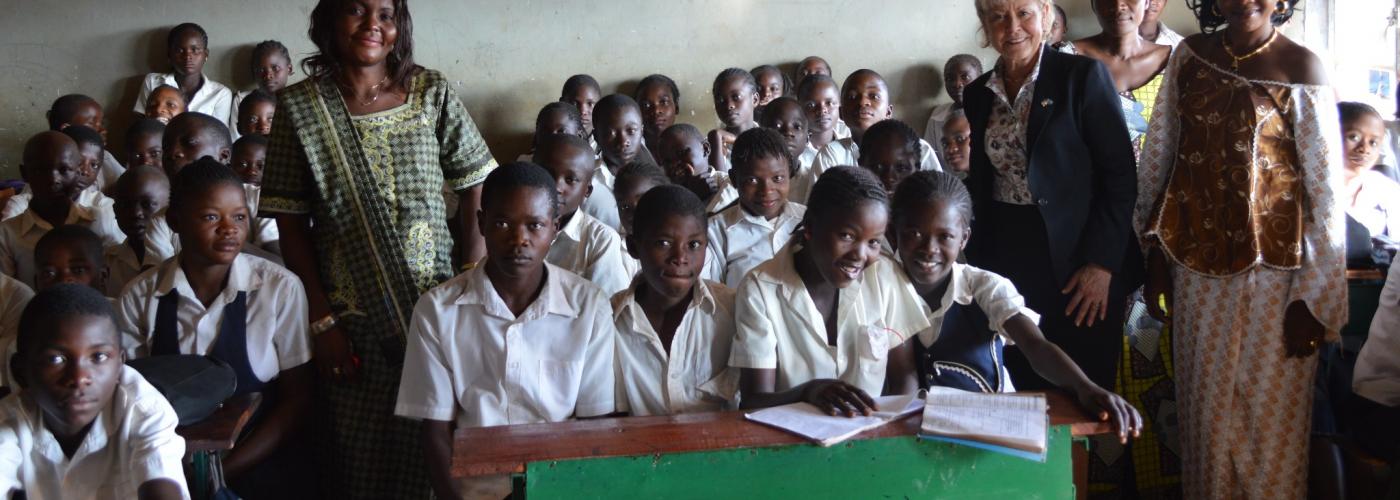Mobilizing Private Capital to Close the Financing Gap in Education
Image

By Caroline Johnson, Palladium
The global call for access to quality education for all by 2030 comes with a hefty price tag. To meet this target, we need $40 billion in additional funding every year for primary and secondary education alone. To begin closing this gap, new approaches to mobilizing more resources will be imperative, since development agencies and philanthropic organizations do not have the funds to fill the gap on their own. Closing the gap requires mobilizing the world’s largest financing pools — private capital. Yet many areas where private investment could have significant social impact are considered too risky by investors.
The USAID CATALYZE EduFinance program develops private sector partnerships to accelerate innovations in financing and service delivery that increase access to low-cost, quality education. CATALYZE EduFinance mobilizes blended finance — the strategic use of public funds to increase private sector investment — to crowd in private capital into non-state schools and education enterprises in USAID partner countries.
Examples of successful blended finance transactions are limited, particularly in Sub-Saharan Africa and Latin America and the Caribbean (LAC). LAC is considered an “untapped market” for private sector investment in education, and CATALYZE EduFinance is pushing the boundaries of what’s known about the investment appetite for education in LAC by conducting market assessments in the Dominican Republic, Ecuador, El Salvador, Guatemala, Haiti, and Paraguay.
Sub-Saharan Africa
In South Africa, Zambia, the Democratic Republic of the Congo, and beyond, EduFinance is working with non-traditional private sector partners, such as Kaizenvest and CHANCEN International, to expand opportunities for blended finance by uniting private sector expertise with USAID-leveraged opportunities. Through concerted contracting efforts, CATALYZE EduFinance has helped increase non-traditional private sector partners’ capacity to work effectively with USAID, expanding opportunities to utilize blended finance in the future.
CATALYZE EduFinance works in countries with historically very low educational outcomes: Zambia, the Democratic Republic of the Congo, South Africa, Tanzania, and Rwanda. In Zambia, 70% of second graders cannot read. South Africa ranks high on education spending, but its educational outcomes are among the lowest in Sub-Saharan Africa.
CATALYZE EduFinance is mandated by the U.S. Congress to serve low to moderate income households in these countries. Children from lower income families attend affordable private schools that are usually run by individual proprietors. This market of mom-and-pop schools is highly fragmented and often their financials are not prepared by professional accountants. These schools are not easy to appraise and are not viewed as creditworthy borrowers by traditional lenders or attractive investments by investors who are looking to finance larger deals. CATALYZE EduFinance will work with aggregators (banks, microfinance institutions, and service providers) to serve this market efficiently through financial and technical assistance products.
In South Africa, CATALYZE EduFinance partner, Kaizenvest, will use financial and non-financial incentives to motivate school operators to improve education quality and school infrastructure. Using a rewards and recognition system, schools will be rewarded for reaching education quality targets and publicly recognized for their achievement. Public recognition raises the schools’ standing in the community while also motivating their peers to improve their standards.
In Zambia, CATALYZE EduFinance partner, Promoting Equality in African Schools, will use a public-private model to extend quality affordable education in rural areas in partnership with the government of Zambia.
In the Democratic Republic of the Congo, CATALYZE EduFinance partner, Opportunity International, will offer gender and inclusion training to schools, motivating them to invest in gender-sensitive infrastructure —for example, gender-segregated washrooms, investing in better lighting to improve student safety in schools, and introducing gender-responsive pedagogy in the classrooms.
Basic Education
The literature review, Blended Finance in the Non-State Education Sector, which CATALYZE published in August 2020, confirmed and deepened our understanding of the challenges faced in mobilizing private capital for one of the most financially under-served sectors globally, namely, basic education. A comprehensive study of the latest evidence revealed that the market for education finance lacks scale, shows deep fissures of fragmentation, faces uphill policy and public perception battles, and predominantly includes informal non-state entities operating sub-commercial business models. Already in the bottom decile for global assets under management by sector according to the Global Impact Investing Network, the proportion of impact investment funds going to education has declined further over the last year. None of this bodes well for leveraging substantial sums of private capital for primary education, especially not to benefit the low-income communities in the marginal markets where CATALYZE has been asked to focus.
Nonetheless, CATALYZE has begun work with specialist partners who have proposed promising ideas for delivering on improved educational outcomes and private capital mobilization, some tested in markets other than those under CATALYZE. Consonant with the consistent CATALYZE theme of paying for results, some of the proposed models incorporate financial and other incentives for schools and other education service providers to achieve measurable improvements in educational outcomes in exchange for financial incentives and discounts. At the same time, CATALYZE has seen interest in these edufinance models from a small group of venture philanthropists and other private investors seeking below market rate returns. In turn, we anticipate that CATALYZE will emphasize engagement with these types of investors over the coming months and years to help demonstrate viability, which eventually we hope would attract more and a greater diversity of investors over the long term.
Palladium implements CATALYZE for USAID.

